How a Memphis artist uses bobcats and ladybugs to help foster youth feel more at home
In 2009, a child at the Rose Center for Girls repeatedly refused to return to her “courtyard,” her living space that her bedroom was in. Most of the youth at the residential treatment facility struggled with serious behavioral and mental health issues; and no matter what staffers did, they couldn’t convince this girl to go back to her room at the end of the day.
Looking for a solution, they approached Mary Minor, a local artist who was painting illustrations on the walls throughout the Rose Center. They told Minor that the girl loved ladybugs, which gave her an idea: She would paint a trail of ladybugs the girl could follow to her courtyard.
The plan worked effectively. Minor painted tiny ladybugs on the walls, all the way from the cafeteria to her living space. Some of the insects were so small they were difficult to spot, but this was by design. The girl enjoyed searching for them, and by the time she found them all, she had reached her courtyard and was willing to go inside. The transition to bedtime had become fun.

It was an early example of the intentionality Minor puts into her paintings at both the Rose Center and Bill’s Place, a residential treatment facility for boys on the same campus. The two spaces are run by Memphis-based Youth Villages; and for years, Minor and her two teammates have worked with the nonprofit to create art that makes the centers feel less like inviting places.
“We always have the kids in mind, because they're the ones that have got to remember this,” Minor said. “We try to make it look very homey and very friendly… When the kids walk in the hallway, they get so excited, [and say] ‘What are you going to do now?’"
Livening up the facility
Most of the children and teenagers at the Rose Center and Bill’s Place face mental health challenges due to past trauma, and they’re often referred to Youth Villages for severe behavioral challenges, emotional challenges, or both. At the centers, they receive a variety of treatments and services, and their stays, on average, tend to last six to nine months ― which makes providing a warm, welcoming atmosphere important.
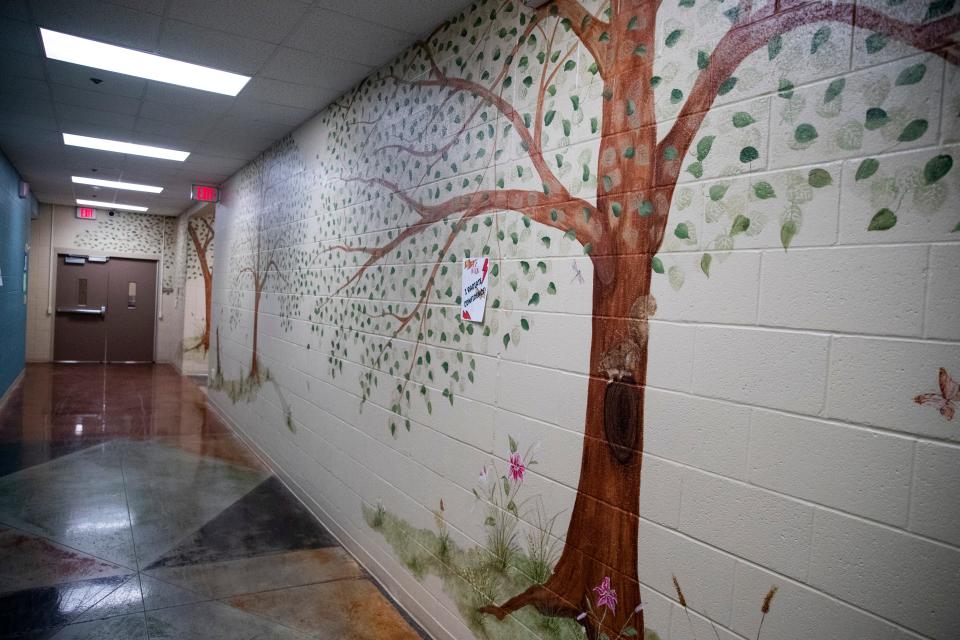
Minor started her work in the Rose Center in 2008, the same year it opened, and spent several years painting there. On a mission to keep it from feeling like other mental health facilities, she and her team painted flowers and trees. They painted birds and baby animals. They painted a large projector screen and film tape. When the staff requested help, they painted things like the ladybugs that were tailored to specific children.
“The staff, they were just saying we need to be able to brighten things up and make it a happy place,” Minor said. “We came in here, and we had so much fun in this building. If you could see the big caterpillars and the big butterflies… we had so much fun.”
A cross country tour
In late 2019, Youth Villages opened Bill’s Place ― which currently houses 144 boys ― and Minor was again called in to help. The nonprofit’s leaders had asked young people who had previously stayed in similar facilities how they should design the new space, and just about all of them had said to keep it from feeling like a hospital or institution.
Minor would play a key role in this effort ― but she never imagined it would become as sprawling or immersive as it has.
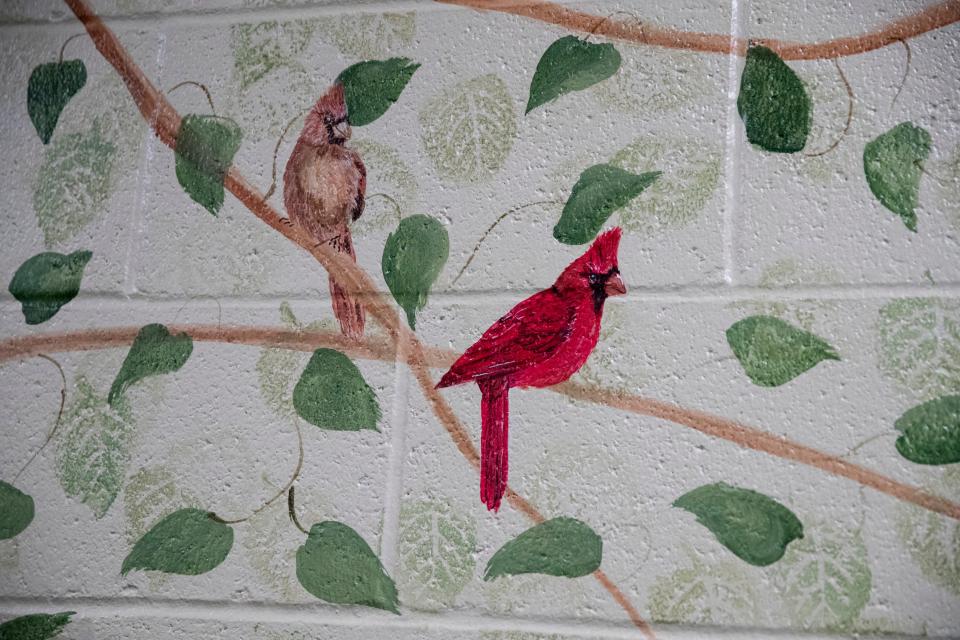
As she and her team began to work, Minor spoke with Patrick Lawler, CEO of Youth Villages, about his family, and how they could incorporate mementos from his past into the art. Growing up, Lawler and his family had gone camping on weekends, and after he and his siblings reached adulthood, his parents got a motorhome and traveled around the country.
This gave and her team the idea that they ran with: large, detailed tributes to all fifty states that incorporated not just subtle references to Lawler’s family, but fun facts and illustrations.
There is a painting of each state on the walls at Bill’s Place, and within it are nods to the U.S. presidents that it birthed, as well as shoutouts to the recognizable products, symbols, animals, figures, and even films that it’s famous for. The original plan was for each state to just have a few things, like the state bird and state capitol. But then Minor and her team kept going.
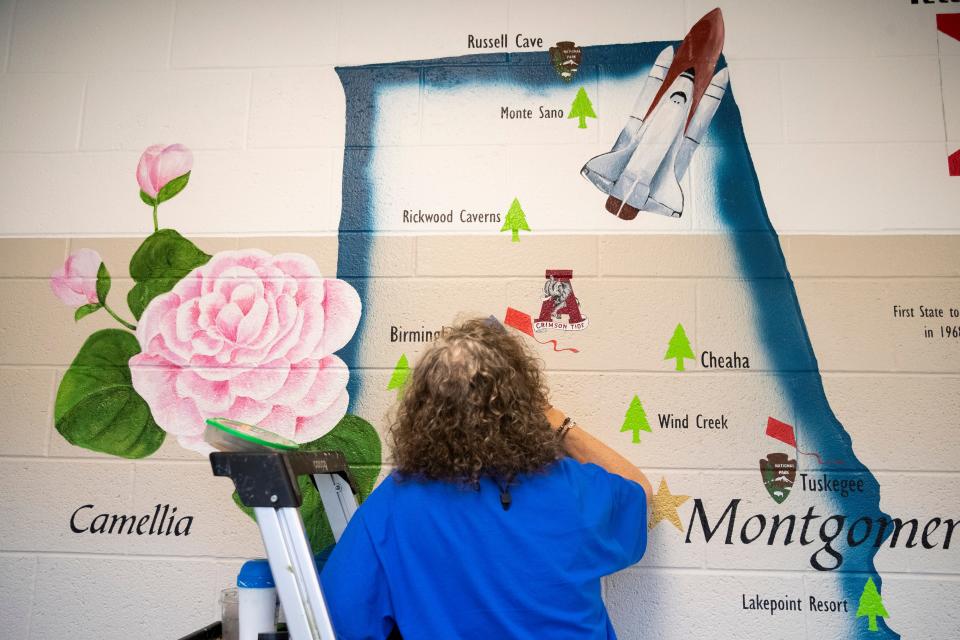
Kansas, for example, has references to The Wizard of Oz and Twister. Because Jim Henson, creator of the Muppets, is from Mississippi, the state has a painting of Kermit the Frog. Because Coca-Cola was developed in Atlanta, Georgia’s illustration includes the drink. The same goes for Kool-Aid in Nebraska, and Mountain Dew in Tennessee.
The creation process, Minor explained, has involved a lot of random Google searches ― and those Google searches have led to educational opportunities. Bill’s Place runs a school, and teachers will take their students to the state displays, so they can learn more about them.
Expressive bobcats
Minor and her team also take feedback from the youth at Bill’s Place into account. The bulk of the boys that stay there are from Tennessee, but they do get people from other places, and they’ll ask them about their state, then work what they said into the paintings.
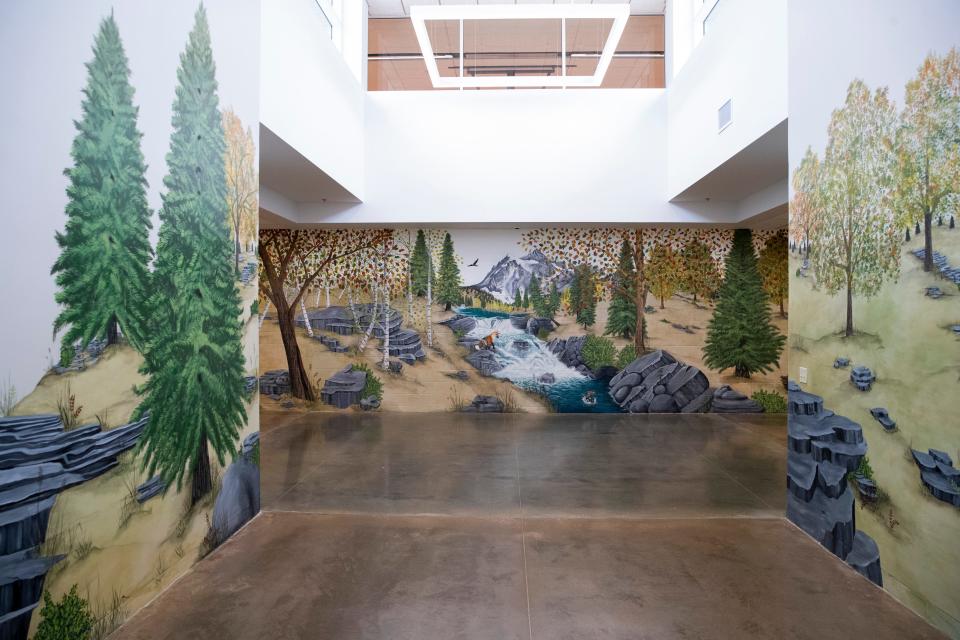
The state tributes aren’t the only pieces of artwork at Bill’s Place, either. There is a large mural of a wooded, mountainous area with a nearly microscopic Bigfoot. There are calming games painted onto the walls and floors for youth as they enter sensory rooms. And the courtyards at Bill’s Place are painted with themes. One, for example, has a Bobcat theme, and the boys who stay in it tend to struggle with verbal expression. They have a hard time explaining what they’re thinking and feeling.
So, at the request of a clinician at Bill’s Place, Mary and her team painted bobcats, throughout the courtyard, that with varying facial expressions. Some of the bobcats are happy, some are angry, others are sad. And when the residents of the Bobcat courtyard need to express themselves to staffers, they can do so by walking up and pointing to one of the bobcats.
Even after all of this, however, Mary isn’t done. She and her team still come in several times a week to paint, and she maintains that there’s a lot left to do.
"We kept adding all these little these things, and it just kept going on and on,” she said. ‘We were like, ‘This is getting to be so much fun.’ It’s just blossomed.”
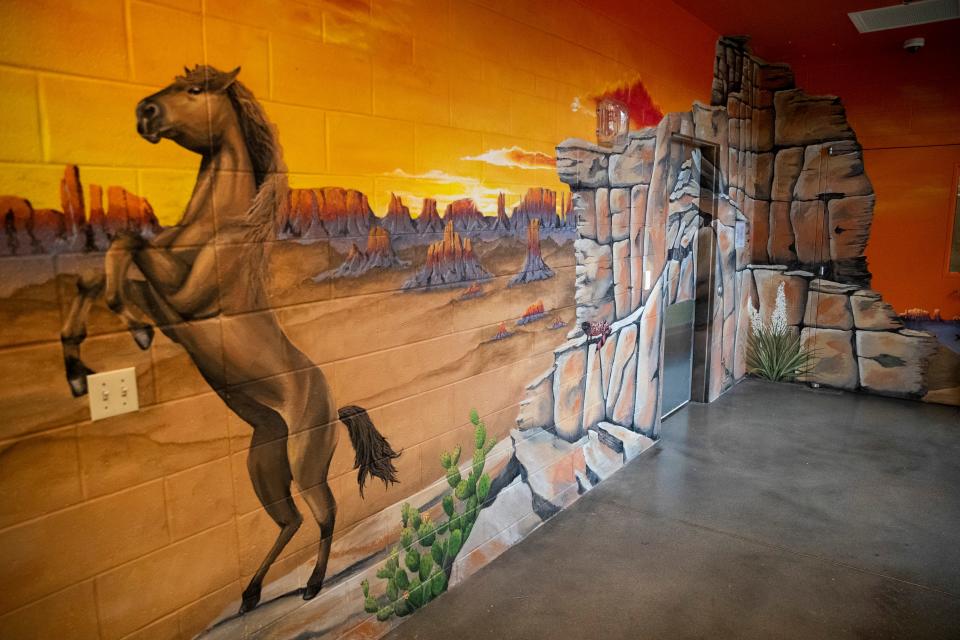
This article originally appeared on Memphis Commercial Appeal: Memphis artist helps Youth Villages children through murals, art
